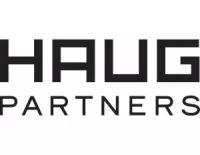What Do We Know?
1. On July 16 2019, the Office issued a Trial Practice Guide Update (USPTO, Trial Practice Guide Update (July 2019)) ("Guidance"). Here are the highlights.
2. Multiple petitions: When challenging the same patent, "one petition should be sufficient to challenge the claims of a patent in most situ[]ations." Guidance at 26. In the "rare" circumstances where two petitions are filed, e.g. when " a large number of claims [are] in litigation or . . . a dispute about priority date requir[es] arguments under multiple prior art references," a petitioner "will be expected" to file a statement or separate 5-page paper justifying the need for two petitions. Id. at 26-27. See also Comcast Cable v. Rovi Guides, IPR2019-00224 (PTAB April 3, 2019) (Paper 10). Patent owner may file a response. Guidance at 28. Three or more petitions are "unlikely" to be appropriate. Id. at 26.
Comment: The requirement for a petitioner to justify multiple (contemporaneous) petitions challenging the same patent is the most important and surprising "rule" change in the Guidance. It partially undermines SAS Institute and permits the Board to use its non-reviewable discretionary denial authority (35 U.S.C. § 314 (a)) to effect a form of partial institution. Such a practice, if enforced by the Board, will be challenged at the Federal Circuit by suitably beleaguered petitioners.
3. Live testimony: The Office reiterated longstanding practice that live cross-examination of a witness before the APJs will be permitted only in very limited circumstances, and essentially will be limited to fact witnesses rather than experts. Guidance at 12-13. The Board will consider the factors set forth in K-40 Elecs., LLC v. Escort, Inc., IPR2013-00203 (PTAB May 21, 2014) (Paper 34) (precedential) to determine whether live testimony will be permitted.
Comment: A fact witness whose testimony may be case-dispositive will be an important consideration. The guidance notes the most likely situations will occur when derivation or misconduct is an issue, or when an inventor has submitted a declaration to antedate a reference. Video deposition clips may be submitted, in the alternative, with Board authorization. Corning Inc. v. DSM IP Assets B.V., IPR2013-00043 (PTAB Aug. 23, 2013) (Paper 41).
4. Claim construction: Petitioner "must" identify a proposed construction for a claim term that requires express construction and the supporting intrinsic and/or extrinsic evidence. Conversely, a petitioner may state that the claim terms do not require express construction. Patent owner may respond to any proposed constructions, and may identify new terms for construction. Petitioner may respond to new arguments by patent owner, but may not raise additional claim construction issues that were not present in the original petition. Guidance at 13.
Comment: The Guidance is not clear about whether petitioner can reply to patent owner's new claim construction arguments in a pre-institution reply. The Guidance also summarizes the new Phillips claim construction rule in 83 Fed. Reg. 51,340 (Oct. 11, 2018) (Final Rule), and gives added emphasis to Board consideration of prior claim construction determinations. Id. at 15 (citing 37 C.F.R. §§ 42.100(b), 42.200(b), 42.300(b)). Submission of a prior claim construction determination is "mandatory" if it is inconsistent with a position advanced by the party during the proceeding. Id. at 16.
5. Withdrawal of POPR Testimonial Evidence: Although testimonial evidence may be submitted with patent owner's preliminary response, "[n]o negative inference will be drawn if a patent owner decides not to present testimonial evidence." Id. at 19. If a trial is instituted, a patent owner who submits an expert declaration with its preliminary response "may choose not to rely on testimony submitted with the preliminary response" and may "withdraw" the testimony in patent owner's response. Id. at 20. In such circumstances, "that declarant will usually not be subject to deposition on the withdrawn declaration." Id.
Comment: This is also a very important clarification and provides an opportunity for patent owners to substitute-in a new expert witness after institution.
6. Claim amendments: First, the Office reiterated that a patent owner that files a motion to amend "may offer arguments regarding patentability of any proposed substitute claim and may support their arguments regarding patentability with testimony from a technical expert." Id. at 36. Second, the Office advised that motions to amend may address potential 35 U.S.C. § 101 or § 112 issues, even though such issues are outside the scope of post-grant review. Id. at 38 (citing Lectrosonics, Inc. v. Zaxcom, Inc., Case IPR2018-01129, -01130, slip op. at 5–6 (PTAB Feb. 25, 2019) (Paper 15) (precedential)).
7. Joinder practice: The Guidance states that "when an otherwise time-barred petitioner requests same party and/or issue joinder, the Board may exercise its discretion to permit joinder, but will do so only where fairness requires it and to avoid undue prejudice to a party." Id. at 42.
Comment: Though the Office suggested that such joinder will be permitted "only in extremely limited circumstances," it made clear that a patent owner who adds newly asserted claims in a co-pending litigation is one of those circumstances. See Id. at 42-43 (citing Proppant Express Invs. v. Oren Techs., Case IPR2018-00914, slip op. at 3–4 (PTAB Mar. 13, 2019) (Paper 38) (precedential)).
The content of this article is intended to provide a general guide to the subject matter. Specialist advice should be sought about your specific circumstances.

